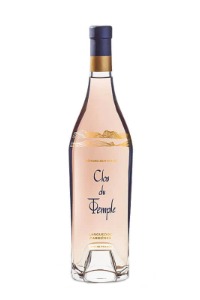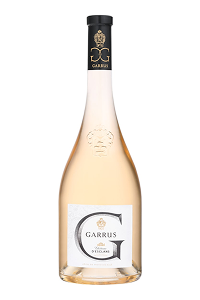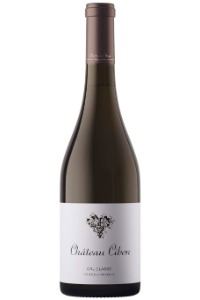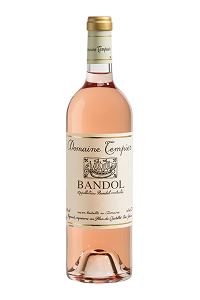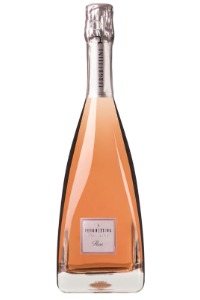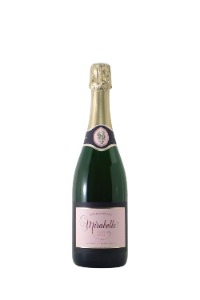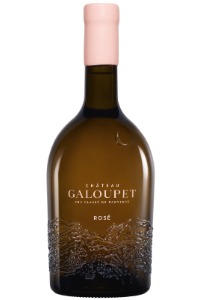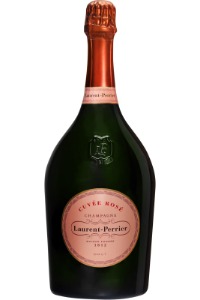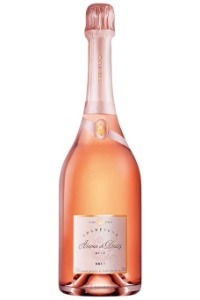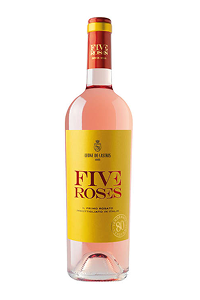Must try rosé wine picks for 2025
Rosé wine is finally having its well deserved spotlight, celebrated for its elegance, versatility and increasingly sophisticated style. In this guide, we’ll explore the best rosés of 2025, ranging from dry rose wines to sweeter styles, complete with tasting notes and food pairings.

By
Last updated:
Table of Contents
10 Best rosé wine bottles to buy online
Rosé – Clos du Temple 2020
France
Étoile Rosé – Domaines Ott 2022
France
Gaarus Rosé 2022 – Chateau d’Esclans
France
Château Cibon Cuvée Marius Rosé – Clos Cibonne 2020
France
Les Clans Rosé – Château d’Esclans 2022
France
Sancerre Rosé – Lucien Crochet 2024
France
Rosé Franciacorta DOCG – Barone Pizzini 2016
Italy
Bandol Rosé – Château de Pibarnon 2024
France
Château Rosé – Peyrassol 2023
France
Rosé of Pinot Noir – Flowers 2023
California
The table above shows 10 of the best rosé wines for this year, handpicked from different categories such as dry rose wines, sparkling roses and the most classic Provence rosé wines, along with standout bottles from other regions. Each wine was chosen for its strong customer feedback and expert praise ensuring that the final selection reflects what readers genuinely enjoy and look for in a great rosé.
Rosé wine brands worth discovering
Rosé wine is crafted in several winemaking regions and countries worldwide by winemakers who have greatly improved its quality and established its status as a globally loved wine. Below, we shine the spotlight on three rosé wine brands from three major wine producing countries.
Château d’Esclans – Provence, France
Château d’Esclans is an ancient site that has been cultivated for over 2,500 years, producing, amongst others, some of the best French rosé wines. It once served as a Roman watchtower and it has been the property of several owners before it was purchased by the renowned wine entrepreneur Sacha Lichine in 2005. With a clear vision to elevate rosé to the level of fine wine, he modernised the vineyards and brought in top winemaking talent, including Patrick Léon (former winemaker of Château Mouton Rothschild). The château is now credited for the rosé renaissance, with their major rosé wine “Whispering Angel” achieving luxury status and remaining in high demand in the US and worldwide.
Garrus Provence Rosé 2021 – Château D’Esclans – France
Ferghettina Winery – Lombardy, Italy
Ferghettina is one of the main wineries in Italy’s Franciacorta region, founded in 1991 by Roberto Gatti. He brought with him 20 years of experience as a cellar master at Bellavista, an early Franciacorta winery. The winery released its Franciacorta Rosé as part of its portfolio of Franciacorta sparkling wines and in 2007, his son Matteo Gatti designed the patented square based bottle that increased the contact between wine and lees during aging, greatly improving the quality and complexity of their wines.
Franciacorta Rosé 2020 – Ferghettina – Italy
Schramsberg Vineyards – California, US
In 1862, Jacob Schram, a German immigrant, purchased land in Napa valley that would later become Schramsberg vineyards. He started off by planting a variety of grapes, but the winery later fell into years of decline. In 1965, Jack and Jamie Davies started restoring the winery, focusing on producing world class sparkling wines with Chardonnay and Pinot Noir. It produced its first rosé in 1968, the still Gamay Rosé and in the 1990s Schramsberg started producing the multi vintage brut sparkling rosé, named “Mirabelle Rosé”. Their ultra premium J. Schram Rosé was officially released to the public in September 2006, representing the pinnacle of their sparkling rosé production. Today, Schramsberg is celebrated for its elegant sparkling rosé wines beloved worldwide.
“Mirabelle” Brut Rosé – Schramsberg Vineyards – California
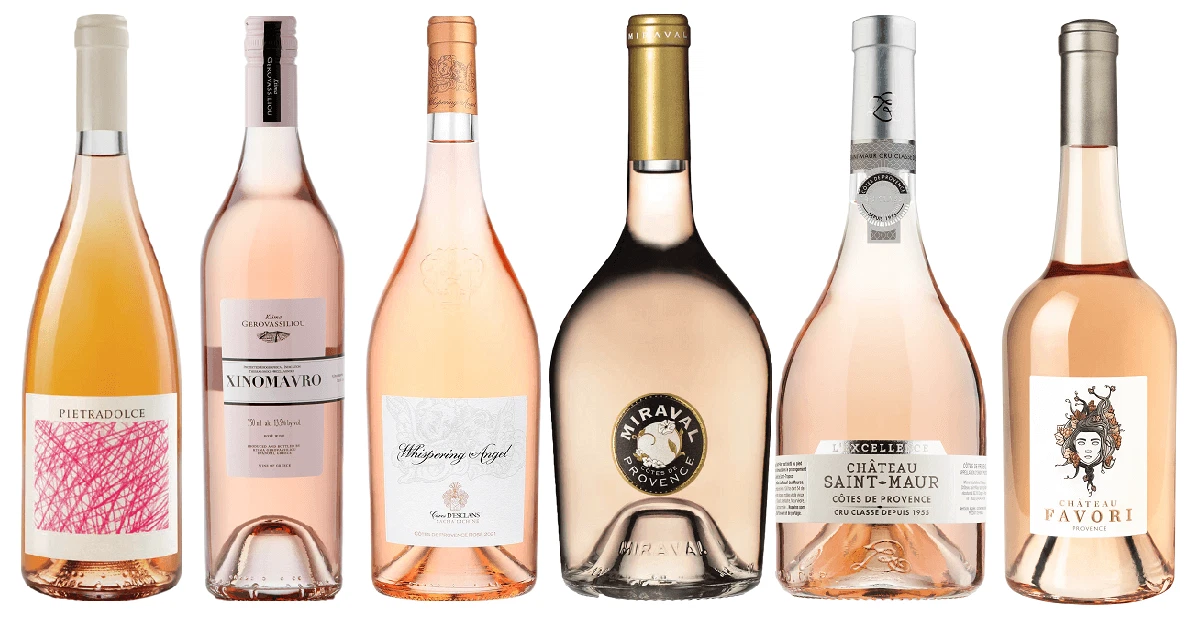
What is rosé wine and how is it made?
When people think of rosé wine, they often assume that it’s just a mix of red and white wine but that’s far from the truth! Most of the time, the signature pink color comes from brief contact between grape skins and juice during fermentation. While red wines are fermented with skins for days or weeks, pink wines only undergo a few hours of maceration, giving them a lighter color and fresher profile.
There are several methods used to make good rosé wines, each one influencing the flavor and structure of the end product:
- Saignée method (“Bleeding”) is where a portion of the juice is drawn off early during red wine fermentation. The juice is then fermented separately to give fuller bodied rosés while also concentrating the remaining red wine.
- Direct pressing involves red grapes being gently pressed as fast as possible to create a very pale, delicate wine that does not undergo any maceration. The juice is drained off before the skin can color it. Wines produced using this method are known as “Vin gris” (gray wines) although they are more of a pale pink than grey in color.
- Short maceration is the most common winemaking method and it is performed after crushing the grapes.. The skins of red grapes are allowed to remain in contact with their juice for a brief period, typically anywhere from 2 to 24 hours. The grape must is then pressed and the skins discarded, instead of leaving them throughout fermentation. The time spent in contact will determine the color of the final wine; that is to say, the longer the time, the more intense the color.
- Blending of different batches of wine involves mixing little amounts of red wine into white wine to create a rosé. This practice is often discouraged and uncommon among winemakers of still pink wines but it is widely used in the making of sparkling wines, particularly Champagne.
Maceration time has the greatest influence as it directly affects both the color and the body structure of the wine, both elements defining excellence in rosé wine. Keep in mind that different grapes and production techniques result in very distinct rosé styles!
How are rosé wines classified?
There are different types of rosé wine determined by factors like the grape varieties used in their production, the specific winemaking techniques involved, as well as the amount of residual sugar present in the wine. Some rosés are light and crisp with refreshing bubbles and a pale salmon pink color, while others are richer and fuller bodied, a serious shade of ruby due to longer maceration times.
Let’s consider the categories of rosé wine:
- Body, referring to the feeling of the weight and thickness of the rosé on your palate. A wine can be light, medium or full bodied and it is determined by the alcohol content, sugar levels and other factors.
- The sweetness of a wine is determined by how much sugar is left after fermentation, referred to as the residual sugar. Sweetness is measured in grams per liter (g/L) and pink wines range from dry to lightly sweet.
- The production style also significantly affects the color, flavor and texture of rosés. Wines crafted by direct pressing are often light and subtle, saignée rosés may be fuller bodied, while short maceration results in a wide spectrum of styles.
Understanding these differences helps to understand the wine type and choose a good rosé wine to suit the taste and occasion you need it for.
Rosé wine by body: light, medium and full styles
With so many textures and weights, understanding a rosé wine by body is helpful when choosing a bottle. The body of a rosé refers to how light or full it feels in your mouth, shaped by grape variety, alcohol content and production method:
- Light bodied rosé: they’re pale in color with crisp and refreshing acidity, like Provençal rosés.
- Medium bodied rosé: they offer balance between freshness and depth, with a rounder mouthfeel and pronounced flavors.
- Full bodied rosé: they have bolder flavors and creamier texture and are usually derived from methods like saignée or those undergoing 24+ hours of maceration.
In the table below, we have listed examples of pink rosé wine by body type.
| Rosé Wine Body Type | Top Producers | Grape Varieties | Structure & Flavor |
|---|---|---|---|
|
Light bodied
|
Château d'Esclans, Manon, Zeni, Scribe Winery
|
Grenache, Cinsault, Pinot Noir, Rolle (Vermentino)
|
Crisp, dry, pale pink with notes of citrus, strawberry and herbs.
|
|
Medium bodied
|
Henri Bourgeois, Cambria, Bouchaine
|
Pinot Noir, Syrah, Tempranillo, Sangiovese
|
Balanced acidity, with flavors of raspberry, cherry and lemon.
|
|
Full bodied
|
Billecart-Salmon, Piper-Heidsieck, Ruinart
|
Grenache, Cabernet Sauvignon, Syrah, Pinot Noir
|
Rich, structured with flavors of red berries, almond and brioche.
|
Light bodied rosé wines
Light bodied rosé wines are crisp and refreshing with bright acidity and a delicate mouthfeel. Their pale color and notes of red berries, citrus and florals make them a great choice for seafood, salads or light appetizers. These wines are ideal for warm weather or as a versatile aperitif.
Medium bodied rosé wine
Medium bodied rose wine strikes the perfect balance between freshness and structure. With a fuller texture, they often feature flavors like ripe berries, pomegranate and mild spices. Medium bodied rosés are very versatile and pair wonderfully with grilled vegetables, chicken and Mediterranean dishes.
Full bodied rosé wines
Full bodied rosés are often made from grapes like Pinot Noir, Grenache and Mourvèdre, known for their robust and more complex flavor profiles. They tend to be deeper in color because of longer contact between the skins and the grape juice. Due to their richer flavors and rounder mouthfeel, they pair well with heavy foods like grilled meats, spicy cuisine and strong cheeses.
Côtes de Provence Cru Classé Rosé 2022 – Château Galoupet – France
Spotlight: sparkling rosé wine wine for bubbly celebrations
Sparkling rosé wine is a top choice for celebrations due to its vibrant bubbles and refreshing flavor. It may range from dry to sweet options, crafted using the Charmat or the traditional method, which involves a second fermentation in the bottle. Rosé sparkling wine is typically fruity and a versatile food pairing option. Here are our 3 best sparkling wine rosé recommendations:
1. Laurent Perrier Cuvee Rosé Magnum – France
2. Deutz Amour de Deutz Brut Rosé 2013 – France
3. Shaffenberger Brut Rosé – California
Serving tips: serve your glass of sparkling rosé at a temperature between 45°F and 50°F. Use a flute or tulip glass to maintain its effervescence and enhance aroma.
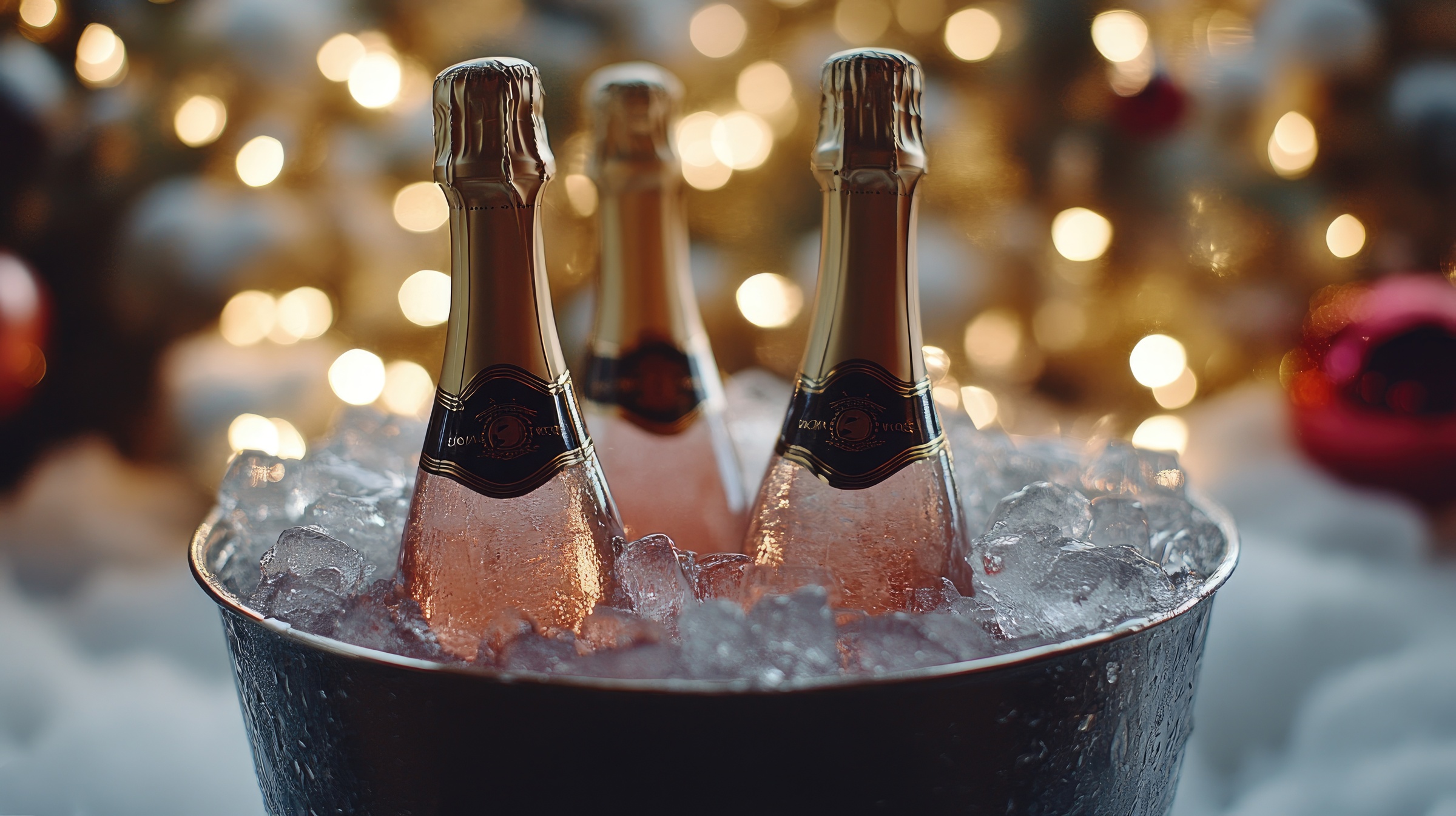
Discovering pink wines by sweetness
Rosé wines can also be categorized based on how much residual sugar is present after fermentation. The styles range from dry to sweet and you can determine the sweetness of the wine by checking its label. Some regions are also known for their specific style of rosés; for example, Provence predominantly produces dry rosés, while Rosé d’Anjou from the Loire Valley is typically sweet.
Let’s consider the different styles of Rosé wines by sweetness:
- Dry rosé wine is bright, crisp and refreshing, with a dry finish and little to no residual sugar, often less than 4g/L.
- Semi sweet rosé, also called off dry rosé, these wines are fruit forward with a balanced acidity and enough sweetness to be noticeable.
- Semi dry rose : also called off dry rosé, perfect balance between freshness and a touch of sweetness.
- Off dry rosé: noticeably sweeter than the semi dry style, retains enough acidity to balance the sweetness.
- Sweet rosé wines contain a significant amount of residual sugar, with a fuller bodied profile and prominent flavors of fruits and flowers.
In the chart below, we have highlighted some top rated rosé wines for each sweetness level to guide you in making the perfect choice the next time you choose to indulge in the goodness of pink wine!
| Sweetness | Best Rosé Wine Brand | Common Varietals |
|---|---|---|
|
Dry Rosé wine
|
Murrieta’s Well Dry Rosé 2023 - California
|
Grenache, Syrah, Mourvèdre, Sangiovese
|
|
Semi Dry Rosé wine
|
Quivira Wine Creek Ranch Rosé 2024 - California
|
Grenache, Counoise, Mourvèdre, Petit Sirah
|
|
Off Dry Rosé wine
|
Sancerre Chavignol Rosé 2023 - Gerard Boulay - France
|
Pinot Noir
|
|
Sweet Rosé wine
|
Cuvée Friandise Demi-Sec Rosé - Jean Vesselle - France
|
Pinot Noir
|
Premium rosé wines
Rosé wines have long been underestimated compared to reds and whites, often mistakenly seen as simple or inexpensive. But in reality, some luxury rosé wines rival the finest wines in ageability, depth and prestige.
While most rosés are meant to be enjoyed young and don’t have significant aging potential, a select premium options have earned a place in the cellars of serious collectors for different reasons:
- Their rarity: rosé wines that are produced in limited quantities from premium grapes grown in single vineyard sites or praised terroirs are highly sought after by collectors due to their high quality.
- Their reputation: when rosés are produced by big name brands who have cultivated a reputation for making excellent wines, they tend to command higher prices.
- Their exclusivity: rosés that are only available through exclusive channels or private allocations typically represent the best of the best, carefully crafted using precise winemaking techniques from grapes of the highest quality.
If you’re thinking of building a wine collection, luxury rose wines may surprise you! Take for example, Five Roses by Leone de Castris. It is celebrated as Italy’s first bottled rosé and a cult favorite among collectors.
Delicious food pairings with rosé wine
While rosé wine is often associated with appetizers, it’s actually incredibly versatile! With lighter tannins than reds and lower acidity than whites, the best food to pair with rosé wine ranges from crisp salads to grilled meats.
Our rosé versatile wine pairing review below highlights just how well this style complements a wide range of dishes.
| Food | Best Rosé Wine Brand | Grape Variety | Type & Structure |
|---|---|---|---|
|
Duck breast filets, roast chicken with herbs, rosemary lemon grilled quail
|
Château de Selle Côtes de Provence Rosé 2024 - Domaines Ott - France
|
Grenache, Cinsault, Syrah, Mourvèdre
|
Round, fresh, herbaceous, bouquet of fresh jasmine, orange peel and grapefruit.
|
|
Caprese Salad, Margherita Pizza, Prosciutto
|
Château Romassan Bandol Rosé 2023 - France
|
Mourvèdre, Cinsault, Grenache
|
Mineral and crisp with notes of pear, lime zest, spring flowers, ginger and green melon.
|
|
Grilled shrimp, sushi, marinated fish, halibut filets steak
|
Etna Rosato DOC 2024 - Terre Darrigo - Italy
|
Nerello Mascalese
|
Medium bodied, creamy and tangy rosé with notes of peach, crabapple and flint.
|
|
Mild cheeses like gruyère, brie, mozzarella, harvati and Monterey Jack
|
Rosé of Pinot Noir 2023 - Vivier Wines - California
|
Pinot Noir
|
Bright and crisp with aromas of red roses, dried strawberry, ginger and lime zest.
|
|
Grilled vegetables, smoked salmon, scalloped oysters, bouillabaisse
|
Cassis Rosé 2024 - Domaine du Bagnol - France
|
Grenache, Cinsault, Mourvèdre
|
Mineral driven, crisp acidity, smoky
|
|
Roast rib of beef, wild boar ragù, venison sauce, chocolate roasted hare
|
Summer In A Bottle Rosé - Wolffer Estate - France
|
Syrah, Grenache, Cinsault, Vermentino
|
Lively aromas of herbs, cranberry and red currants with smooth tannins.
|
|
Vinaigrette salad, pumpkin casserole, potato pan, spaghetti with caper tomato sauce
|
Ahr Pinot Noir Rosé 2022 - Meyer-Nakel - Germany
|
Pinot Noir
|
Fresh sweetness balanced by a good acidity
|
|
Sausage, Peppers, Grilled Pork Chops
|
Faustines La Londe Rosé 2024 - Château Les Mesclances - France
|
Grenache, Mourvèdre
|
Rich floral and fruity aromas of pear, stone fruit and herbs with a peppery finish.
|
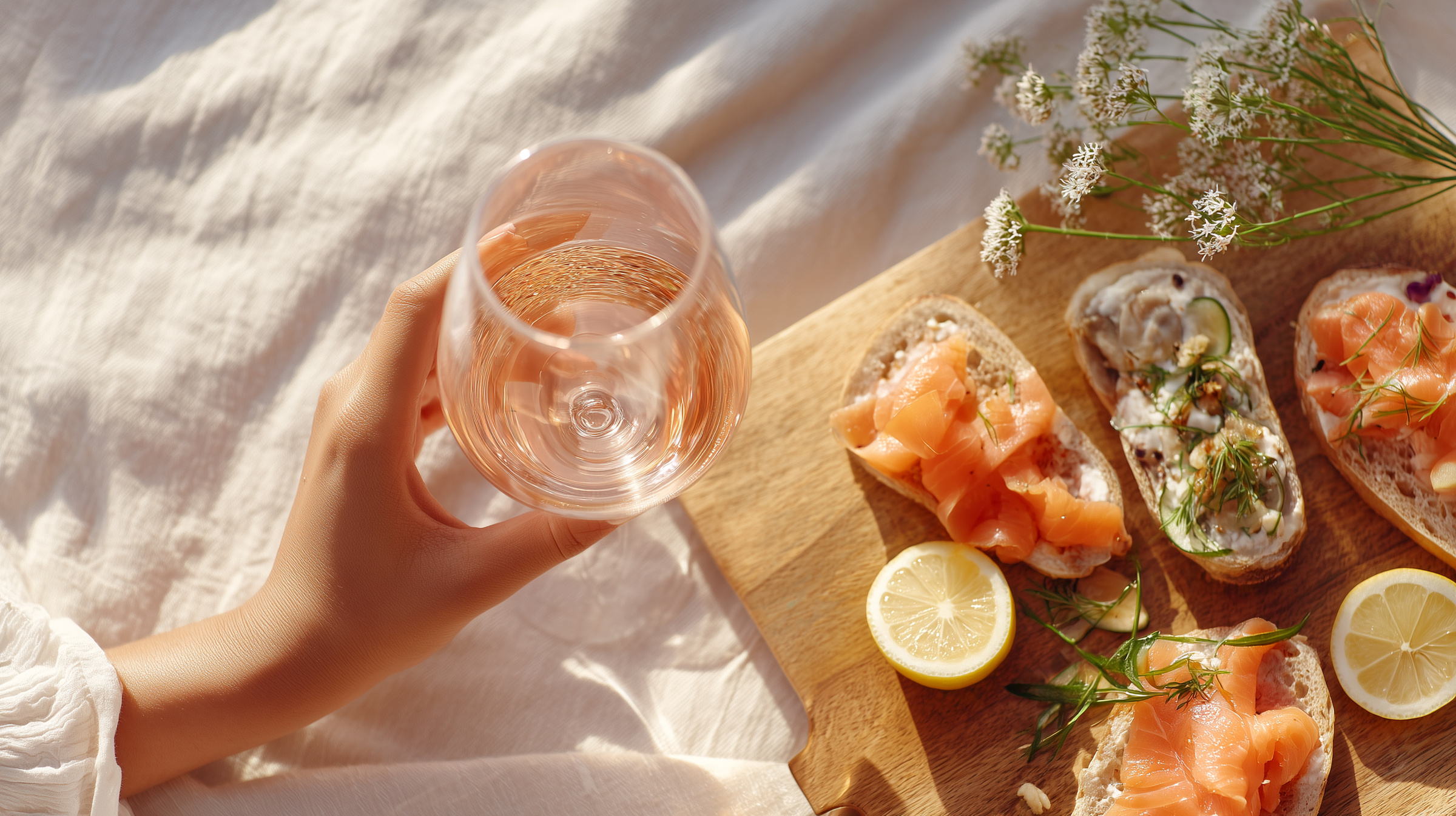
Rosé wine regions around the world
Rosé wine is produced in many parts of the world, each region offering its own style shaped by climate, grape varieties and local traditions. French Provence remains the global reference point, known for pale, delicate rosés with fresh red berry notes and a dry, refreshing finish. Across Europe, regions like Tavel in the Rhône Valley, Rioja in Spain and Abruzzo in Italy craft fuller, more structured rosés with deeper color and richer fruit. Beyond Europe, the US (especially California and Oregon), Australia and South Africa have developed vibrant rosé cultures, producing wines that range from crisp and mineral to juicy and fruit forward. Together, these regions show how diverse and expressive rosé can be, offering styles that better adapt to climates and local cuisine.
California rosé wine and other rosé producing regions in the US
In the US, rosé wine is a significant segment of the wine market, experiencing a true renaissance in the 1970s with the invention of white Zinfandel and other blush wines. Today, the United States rank second in global consumption of pink wine, with leading producers in California, Oregon, Washington, and Long Island in New York.
California rosé wine stands out as a reflection of the region’s creative spirit with winemakers crafting increasingly complex rosés beyond sweet white Zins. Drawing inspiration from other iconic wine countries like France and Italy, Californian brands emphasize crafting rosé wines that are suitable for all kinds of food. They do this by:
- Employing innovative winemaking techniques like barrel aging, aging on fine lees, cold fermentation and minimal intervention to push traditional production boundaries. By doing this, they can enhance the freshness and aromatics of their blush wines.
- Harnessing a wide grape selection that allows them to craft elegant and expressive rosés that have never been tasted before. These include grapes like Pinot Noir, Grenache, Mourvèdre, as well as blends with varieties such as Cinsault, Cabernet Franc and Syrah.
- Taking advantage of diverse terroirs and microclimates to craft uniquely balanced and vibrant wines. Regions like Sonoma, Paso Robles and Santa Barbara offer crisp and tart styles that remind you of the best rosés from Provence.
In the table below, we highlight some of the finest California rosés, along with outstanding recommendations from other US states.
| Region Grape | Top Rose Wine | Tasting Notes |
|---|---|---|
|
North Coast, CA - Carignan
|
Twice Removed Rosé 2023 - Kivelstadt Cellars
Rosé of Pinot Noir 2017 - Mira Winery |
Dry and medium bodied with a mouthwatering acidity and a long, zesty finish
|
|
Central Coast, CA - Chardonnay, Pinot Noir Sonoma County, CA - Sangiovese
|
Brut Rosé 2019 - Caraccioli Cellars
|
Crisp and dry with a creamy texture and vibrant acidity
|
|
Carneros, CA - Pinot Noir, Chardonnay Paso Robles, CA - Grenache
|
Cuvee de la Pompadour Brut Rosé - Domaine Carneros
|
Light to medium bodied, saline notes and hints of fruit and spice notes
|
|
Santa Maria Valley, Central Coast, Santa Rita Hills, CA - Pinot Noir
|
Rosé of Pinot Noir 2024 - Foxen Vineyard
|
Dry and crisp with refreshing fruit notes
|
|
Willamette Valley, OR - Pinot Noir
|
Rosé 2024 - Adelsheim
Whole Cluster rosé of Pinot Noir 2023 - Willamette Valley Vineyards |
Bright and juicy, mineral notes, fruity aromas dominate
|
|
Napa Valley, CA - Columbia Valley, WA - Merlot, Cabernet Sauvignon, Cabernet Franc, Syrah, Petit Verdot Syrah
|
Arriviste Rosé 2024 - Blackbird Vineyards
|
Light bodied, with bright acidity and notes of strawberry, cherry, plum and peach
|
Premium rosé wine from Italy
Premium rosé wine is not the exclusive domain of France: Italy also produces exceptional expressions locally known as rosato. The style and grape varieties used vary depending on the region and its local climate, but they are often pale wines crafted through short maceration.
Different terms describe rosés from various regions: “Ramato” is a copper colored wine from the Veneto region made from Pinot Grigio grapes, “Cerasuolo” refers to cherry red rosés often seen in Montepulciano d’Abruzzo and “Chiaretto” is a slightly dark rosé wine that is not dark enough to be labeled a red wine.
Our experts have selected top quality rosé wine recommendations for you to try in 2025.
| Region / Grapes | Premium Rosé Wine Brands | Wine Style |
|---|---|---|
|
Veneto
Corvina, Rondinella, Molinara |
Le Fraghe, Giovanna Tantini, Vigneti Villabella
|
Pale pink, delicate floral notes, crisp acidity, light bodied
|
|
Lombardy
Groppello, Sangiovese, Barbera |
Pasini San Giovanni, Selva Capuzza, Le Sincette
|
Floral aromas, red berry flavors, medium acidity, elegant structure
|
|
Abruzzo
Montepulciano |
Valentini, Emidio Pepe, Tiberio, Cataldi Madonna
|
Deep cherry color, rich red fruit flavors, noticeable tannins, full bodied
|
|
Puglia
Negroamaro, Bombino Nero, Primitivo |
Leone de Castris, Tormaresca, Li Veli, Cantine San Marzano
|
Bright pink hues, ripe cherry and berry notes, balanced acidity, medium to full bodied
|
|
Tuscany
Sangiovese |
Fattoria La Valentina, Castello di Ama, Il Palagio
|
Light to medium pink, strawberry and floral notes, refreshing acidity, medium bodied
|
Did you know? In Tuscany, Occhio di Pernice is a sweet rosato version of Vin Santo made 100% from red grapes, most often Sangiovese.
The charm of French rose wines
French rosé wine embodies a lifestyle of elegance shaped by the country’s diverse terroir. France is the top producer of rosé wines globally, produced throughout the country in both cooler regions and in warmer Mediterranean influenced climates. Let’s have a look at some of the notable rosé wine production regions in France:
- Provence makes up almost two thirds of all the wines produced in this region. Provence rosé wine is typically pale with dominant citrus and herb notes, often crafted from Grenache, Syrah, Cinsault, Mourvedre and Cabernet Sauvignon grapes.
- In Tavel, rosé is the only permitted wine style in this AOC, with the wine blends dominated by up to 60% Grenache and at least 15% Cinsault grapes. Other permitted varieties include Carignan, Syrah and Mourvèdre. Tavel rosé is traditionally made by fermenting red and white grapes together in a method that produces boldly structured wines with robust, spicy berry flavors.
- Loire Valley’s Anjou wine region is particularly known for its rosé wine production in two AOCs: Rosé d’Anjou and Cabernet d’Anjou. The latter is often dry and produced from Cabernet Franc and Cabernet Sauvignon, while the former is sweet and made from Grolleau, Gamay and Malbec grapes. Rosé de Loire is another appellation including wines from Anjou, Saumur and Touraine with Cabernet grapes accounting for at least 30% of the blend.
- Champagne: rosé Champagnes are a distinct category of wines from Blanc de Noirs, noticeably colored by the addition of red Pinot Noir wines to the finished wine. Rosé des Riceys is an AOC for still rosé wines produced exclusively from Pinot Noir grapes by the saignée method.
Below, you will find some of our favorite French rosés from the various regions.
| Region / Grapes | Top French Rosé | Wine Style |
|---|---|---|
|
Provence
Grenache, Cinsault, Syrah, Rolle |
Château Minuty Rosé et Or 2024
|
Pale and complex with pretty aromas of exotic fruit, wet stone, bubblegum and peach.
|
|
Bordeaux
Merlot |
Mouton Cadet By Mathilde Rosé 2023
|
Beautiful rose pink hue with aromas of fresh citrus, redcurrant, raspberry, tomato leaf and white peaches.
|
|
Rhône Valley
Grenache, Clairette, Cinsault, Syrah |
Tavel La Dame Rousse Rosé 2023 - Domaine de la Mordoree
|
Smoky and succulent with chalky mineral notes and delicate fruit aromas.
|
|
Burgundy
Pinot Noir |
Marsannay Rosé 2022 - Domaine Joseph Roty
|
Full bodied with fine acidity and a nose of white fruits, flowers and earth.
|
|
Languedoc
Pinot Noir, Cinsault, Chardionnay |
French Cancan Brut Nature Rosé - Gérard Bertrand
|
Seductive nose and a lively, creamy palate evolving into a fruity finish
|
Did you know? Rosé wines account for one third of the wines consumed in France!
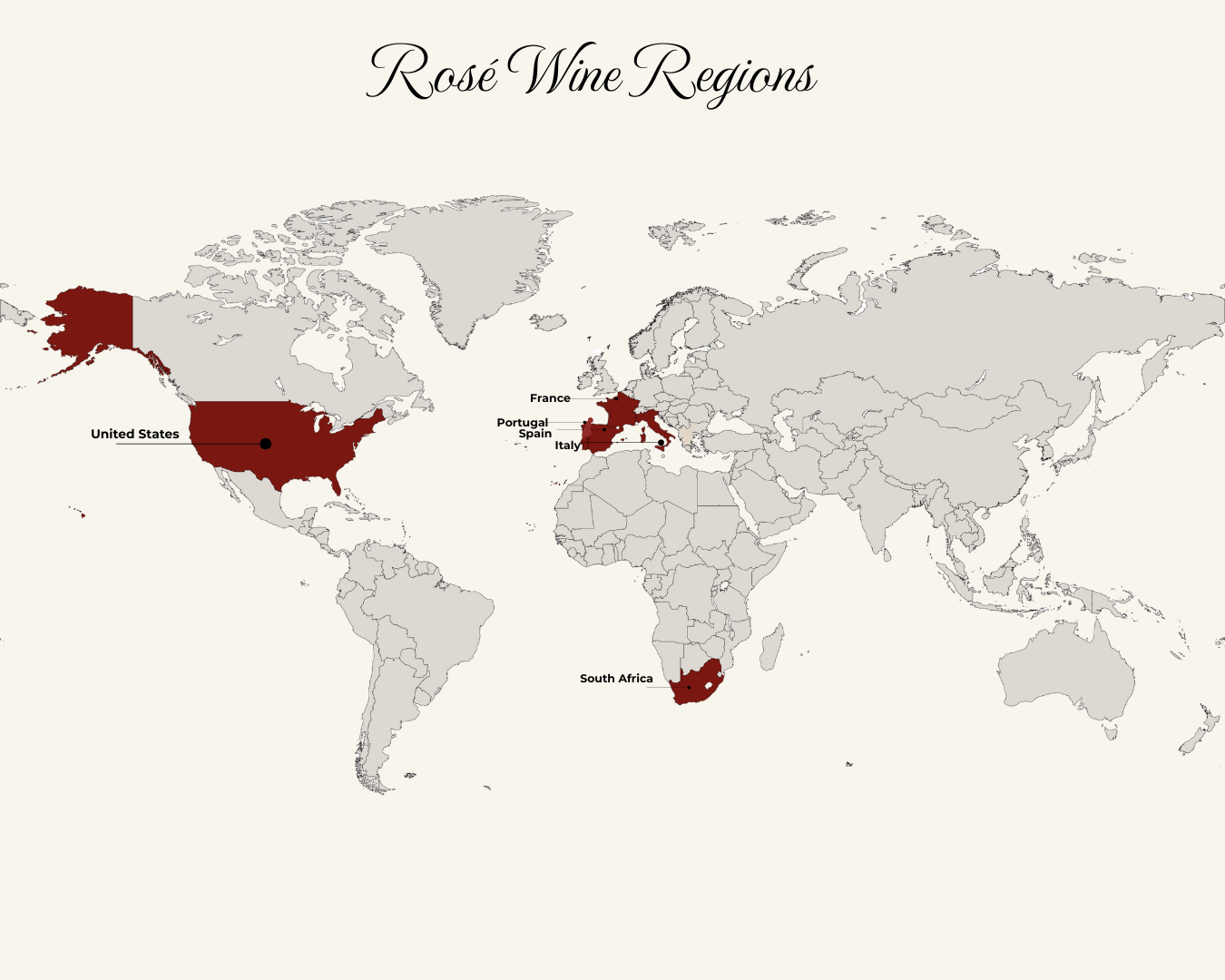
Grape varieties involved in rosé wine production
Rosé wine can be made from a wide variety of grapes, with each of the diverse options reflecting their regions of origin. From the pale, mineral driven styles of Provence to the fruit forward expressions of California, each region grows different grapes, bringing its character to the glass.
The base of most rosé is usually red grapes and although white grapes like Chardonnay and Sémillon can be used in blends, it is not a common practice. An exception is Rosé Champagne, where it is legally permitted to blend both red (Pinot Noir) and white (Chardonnay) grape juices.
Let’s explore some of the most popular rosé wine grapes and the resulting diverse rosé wine types:
Red wine grapes
- Pinot Noir is a light bodied red grape with soft tannins, silky texture and high acidity with red fruit flavors like cherry, strawberry and raspberry, as well as earthy notes and floral aromas. ,
- Grenache is the principal grape variety used in the rosé wines of Tavel AOC. It is a thin skinned, juicy and fruity red grape known for producing rich, flavorful red wines with fruity aromas and bright acidity.
- Syrah, also called Shiraz, is a dark skinned grape with bold and spicy flavors of liquorice, cloves, mint, black pepper, as well as smoky undertones. Rosés made from Syrah grapes are often full bodied and savory, on the drier end of the spectrum compared to other pink wines.
- Sangiovese: a classic Italian grape most famous for its dry red wines, but its bright acidity and bright red fruit flavors are well suited for rosato. Sangiovese rosés are typically medium bodied and dry with herbal notes and a darker color.
- Tempranillo: is a thick skinned red grape used to make medium to full bodied “rosados” in Spain. The wines tend to be deep pink or salmon colored, with dominant flavors of red berries, strawberries and savory notes.
- Zinfandel: a powerful red grape from California known for jammy fruit, spice and high alcohol content. White Zinfandel is a specific style of rosé wine that is made using the “stuck fermentation” technique only from the red Zinfandel grape. White Zins are traditionally sweeter with fruity flavors and low alcohol content.
- Cabernet Sauvignon: yields full bodied rosés with strong acidity and notes of bell pepper and dark fruits. Cabernet Sauvignon may be used on its own to make rosé wine through the Saignée method, or it can be blended with other red grapes like Merlot and Cabernet Franc.
- Malbec rosés are a lighter and refreshing expression of the grapes, typically with a pale pink hue with bright acidity and fruity notes of berries and citrus. Its soft tannins make it an excellent match for dishes like salads, seafood and grilled chicken.
- Mourvèdre grapes are full bodied and savory, often contributing notes of red fruits, herbs and salinity to its rosé wines. Some may also feature hints of spice, red currants and rose petals with a rich texture.
- Clairette rosé: a pink mutation of the Clairette Blanche grape characterized by delicious aromas and flavors of green apple, pear, herbs like fennel and spice. It thrives in warm climates and it is often used to make rosé wines in Provence.
- Moscato rosa del Trentino: a dark skinned Muscat grape that gives sweet and fruity rosé wines that are intensely aromatic with lower alcohol content compared to other rosé wines.
White wine grapes
- Moscato is a sweet and aromatic white grape, producing low alcohol wines with floral aromas, spicy notes like cinnamon and fruity flavors of peach, orange blossom and apricot. Pink Moscato is a sweetened rosé wine that is created by blending white Moscato with red wines like Merlot.
- Chardonnay: a green skinned grape that is highly adaptable to express the characteristics of its terroir. Its neutral character makes it possible for it to be blended with other grapes like Pinot Noir and Pinot Meunier to make rosé Champagne.
Five Roses by Leone de Castris 2023
Dolce & Gabbana Rosa – Donnafugata 2024
Rosé wine serving temperature
When it comes to rosé wine serving temperature, here’s the trick: it should be served chilled but not too cold. The ideal range is around 50-55°F (10-13°C) . If served too cold, the wine’s delicate aromas and flavors can be muted, too warm and it may taste flat or overly alcoholic. Apart from the temperature, you also need to consider the acidity, alcohol content (ABV) and aging potential of a rosé while serving it. These elements work together to enhance the wine’s flavor, texture and longevity.
Have a look at the chart below for a clear idea of how to serve different rosé wine styles at their best.
| Rosé Wine Brand | ABV | Tannin / Acidity | Aging Potential | Serving Temp |
|---|---|---|---|---|
|
Whispering Angel rosé 2019 - Château d’Esclans
|
13%
|
Low tannins, moderate acidity
|
3-4 years
|
46.4°F-50°F(8-10°C)
|
|
Rock Angel Rosé 2022 - Château d’Esclans - France
|
13.5%
|
Moderate tannins, fresh acidity
|
4 years
|
46°F-50°F(8-10°C)
|
|
Bandol Rosé 2024 - La Bastide Blanche - France
|
13%
|
Low tannins, crisp acidity
|
2-4 years
|
50°F-54° F (10-12°C)
|
|
Clos Mireille Côtes de Provence rosé 2023 - Domaines Ott - France
|
14%
|
Low tannins, fresh acidity
|
3-5 years
|
46.4°F-50° F (8-10°C)
|
|
Flor de Muga Rosé 2024 - Bodegas Muga - Spain
|
13.5%
|
Low tannins and crisp acidity
|
3 years
|
43°F-50° F (6-10°C)
|
|
Chavignol Sancerre rosé 2023 - François Cotat - France
|
14,5%
|
Low tannins, medium acidity
|
3 years
|
50°F-53.6° F (10-12°C)
|
How to store your rosé wine bottle in 5 simple tips
Wondering how to store and keep your rosé wine bottle in the best condition? Here are 5 essential tips to preserve its freshness, structure, and aroma:
- Store it cool at a consistent temperature between 45°F–65°F to prevent expansions and contractions that may spoil the wine. Also, avoid extreme heat as it can cook the wine, making it age too quickly and lose its complex aromas.
- Keep it dark! UV rays can damage wine and alter its flavors by chemical reactions that lead to unpleasant smells and tastes. Exposure to light can also degrade the color of the wine, leading to “light strike”.
- Avoid strong odors: rosé is sensitive to its environment and can absorb nearby smells. Store it away from cleaning products, paints or other strong smelling items that may contaminate the wine and make it less enjoyable.
- Lay it sideways (if corked) to ensure the cork stays in contact with the wine, keeping it moist and preventing it from drying out. A dry cork can shrink and let oxygen into the bottle, spoiling the wine through oxidation.
- Mind the humidity: keep humidity around 60–70%. If the environment is too dry,corks may crack, removing the tight seal that protects the wine and allowing air in. Too high humidity causes dampness and the growth of mold on the corks and labels.
How rosé wine is rated by critics: inside the scoring process
Like red and whites, rosé wines are typically scored on a 100 point scale by major publications such as Wine Spectator and Decanter, often in blind tastings to avoid bias. Critics assess rosé based on a few key attributes:
- Appearance: the evaluation begins with color and clarity, ranging from pale salmon to bright pink.
- Aroma: critics look for fresh fruit notes, floral hints and subtle herbal or mineral undertones.
- Structure: the main elements are balance, mouthfeel, complexity and finish.
- Unless it is a bottle of vintage Champagne, aging potential is not really evaluated in rose wines as they are meant to be enjoyed young and fresh.
Another important factor is how well a rosé shows its origin. Critics look for a strong connection between the wine and the place it comes from (known as terroir) as well as how clearly it reflects the rosé grape variety used. Wines that capture both their terroir and grape character tend to get higher ratings.
Example: a Provence rosé is expected to be light, dry and mineral driven, while a Tavel rosé is usually richer and fruitier.
FAQs on Rosé wine
What is the top rated rosé wine?
Some of the top rated rosé wines come from iconic regions like Provence and Tavel. Elisabeth Salmon Brut Rosé 2012 by Billecart-Salmon, is widely celebrated for its smooth and refined profile. Other standout options include Rosé Belle Epoque 2013 by Perrier-Jouët, known for its depth and Tavel rosé, which is prized for its full bodied richness. These wines are often regarded as some of the finest in the category.
What is the best Italian rosé?
Italy is home to exceptional rose wines. One of the best Italian rosé wines is Cerasuolo d'Abruzzo, a vibrant wine made from Montepulciano grapes. Chiaretto from Lake Garda offers a lighter, fresher style while Franciacorta rosé, a sparkling wine from Lombardy, delivers a more structured, sophisticated experience, showcasing the diverse and high-quality rosé options Italy has to offer.
What is the world's best rosé?
The world’s best rosé varies by taste but popular options include Château d'Esclans Whispering Angel, Tavel Rosé from the Rhône Valley and Laurent-Perrier Cuvée rosé Champagne. These wines are praised for their refined flavors, balanced profiles and top tier craftsmanship, offering a premium rosé experience for those seeking quality and elegance.
What is a rosé wine?
Rosé wine is a type of wine made from red grape varieties that have limited skin contact during fermentation. This process gives the wine its signature pink color while still preserving the fruity and floral notes. Rosé wines can range from dry to sweet and are known for their refreshing qualities and wide range of flavors.
What grapes are used for rosé wine?
Rosé wines are made from red grapes with brief skin contact during fermentation. Common varieties like Grenache, Syrah, Pinot Noir, Sangiovese and Zinfandel contribute vibrant color, fresh flavors and varying sweetness levels. The specific grape variety and fermentation process influence the wine's flavor profile, creating a wide range of rosé styles.
What is a good rosé?
A good rosé should strike a balance between freshness, flavor and texture. Look for rose wines that offer crisp acidity, vibrant fruit flavors (such as strawberries, raspberries and citrus), and a smooth finish. Renowned options like Château d'Esclans Whispering Angel, Provence Rosé or Tavel rosé are popular choices for their quality and consistency.
How much is a bottle of rosé wine?
The price of rosé wine varies based on quality, region and brand. Mid range bottles typically cost $10 to $25, while premium options such as Provence rosé or top sparkling varieties can range from $30 to $100 or more. Factors like production method and rarity also influence the final price of the wine.
What food pairs with rosé wine?
Rose wine is incredibly versatile when it comes to food pairings. Its light, refreshing qualities make it perfect with seafood, like shrimp or scallops, as well as fresh salads and light pasta dishes. It also pairs well with grilled vegetables, charcuterie and soft cheeses. For a more structured rosé, try pairing it with grilled meats or Mediterranean cuisine.
How long does rose wine last?
Most rosé wines are best enjoyed within one to two years to maintain their fresh, fruity qualities. However, higher quality rosés with more complex structures, like Tavel or certain Provence varieties, can age well for 3-5 years when stored properly, developing deeper flavors while retaining their distinctive character.
Is rosé a sweet wine?
Rosé wines vary from dry to sweet. Most are dry, particularly those from regions like Provence, known for crisp acidity and refreshing fruit flavors. However, some rose wines like those made from Zinfandel or Moscato are sweeter and more fruit forward, offering a richer, more pronounced taste experience.
What does rosé wine taste like?
Rosé wine typically features flavors of red fruits like strawberries, raspberries and cherries, with floral and citrus notes. The taste varies from dry with crisp acidity to sweeter, fruit forward styles, depending on the grape variety and production method used. This diversity in flavor profiles makes rosé a versatile and enjoyable wine choice.
What is orange wine vs rosé wine?
Orange wine is made by fermenting white grapes with their skins, giving it an amber hue and tannic, earthy flavors. Rosé wine, however, is made from red grapes with brief skin contact, resulting in its pink color and lighter, fruitier taste. Both wines offer unique flavor profiles and characteristics.
Do you chill rosé wine?
Yes, rose wine should be served chilled, ideally between 50-55°F (10-13°C). This temperature enhances its refreshing qualities, highlighting the fruitiness and acidity. Serving it at the right temperature helps balance its flavors ensuring a more enjoyable tasting experience, especially when paired with dishes like seafood, salads or fresh appetizers.
What is the average rosé wine price?
The average rosé wine price typically ranges from $12 to $20 per bottle. Many high quality options are available under $15, proving you don’t need to overspend to enjoy a well balanced rosé. This accessible pricing makes it a popular choice for casual sipping and food pairing alike.
